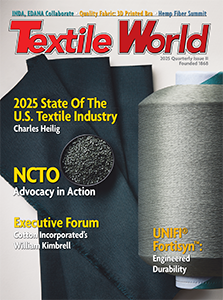IDEA01, the 2001 edition of The International Nonwovens Conference and Exposition, will be held at
the Miami Beach Convention Center March 27-29, 2001. The show is sponsored by the Association for
the Nonwoven Fabrics Industry (INDA).
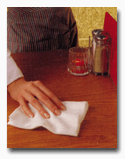
The IDEA show is held every three years. The 2001 conference and exhibition will be the
largest nonwovens show to be held this year, according in information provided by INDA. The
featured keynote speaker is Paul F. Guehler Ph.D., vice president of research and development, 3M,
St. Paul, Minn. 3M has built a number of businesses based on products made from nonwoven materials.
Guehler will present his insight on todays businesses from the perspective of his more than 35
years with 3M.This years exhibit will feature more than 300 exhibitors from around the world. These
companies will display a host of supplies and nonwoven products engineered to meet the challenges
of a wide variety of industries, including construction, electronics, geotextiles, filtration,
medical products, home furnishings, hygiene, landscaping, protective apparel, transportation, wipes
and others. Continuing Education In addition to the exhibition, there will be a number of
conferences that address markets and trends in automotive, home, filtration and medical products;
as well as protective apparel, hygiene, wipes and construction/geotextiles. In addition, there will
be special sessions on e-commerce. Edward Vaughn Ph.D., Clemson University, will present a two-hour
course in nonwoven fundamentals.Following is a list of conference topics:Tuesday, March 27Home
Products New Product Opportunities in Consumer Markets Allergy Control/Anti-Mite Barrier Fabrics
Home Fashion Industry Trends in Home Personal Care Products Filtration Pharmaceutical Industry:
Filtration Regulations Needs in Blood Filtration Department of Defense Needs E-Commerce Filtration
Hubs Filtration Media Market TrendsWipes Wipes: Hazardous Waste Regulation Wipes: Food Service
Industry Cleanroom Wipers: Dynamic Wiping Efficiency Air-Laid Fabrics for Wipes Enhance Wiping
Performance Wednesday, March 28Protective Apparel Evaluating Protective Apparel for Comfort Thermal
Comfort Nonwovens for Military Combat Clothing Systems Space: The Extreme Environment Fire Dept.:
Protective Garment Needs Geotextiles and Construction Markets for Landscape Fabrics Creating New
Markets Geotextiles: The Nature of the Business Hygiene I Toxic Tampons Industry Fights Back Latin
America: Hygiene Market Highloft Materials Folding Is Finally Available Future Developments in
Hygiene Machinery Microporous Film TechnologyThursday, March 29Medical Waste Management: A Trashy
Topic Use of Drapes and Gowns in Healthcare Barrier Standards of Gowns and Drapes Nonwovens: Latin
American Medical Market Breathable Nonwovens: New Applications Automotive Applications Doing
Business: Automotive Industry Acoustical Nonwovens for Automotive Interiors Novel Binders for
Automotive Trimpart Applications Nonwovens in Headliners &Hoodliners Automotive Trends,
Production Opportunities Thermo setting Resins for Auto Applications Hygiene II Preventing Infant
Dermatitis Brands and Brand Development The Future of Nonwovens for Hygiene Leveraging Airlaid
Technology Automated Web Inspection and Formation Visualization Exhibitors As of late January,
companies exhibiting at IDEA01 include:AA. Celli S.p.A., Italy.
Booth No. 850.A.P.I S.r.l. Automations for Packaging, Italy.
Booth No. 923.Accurate Products Co./ Accuweb Meltblown Systems, Hillside, N.J.
Booth No. 810.AccuSentry, Marietta, Ga.
Booth No. 753.Action Interlining Co. (Hong Kong) Ltd., Hong Kong.
Booth No. 634.Advanced Testing Instruments Corp., Spartanburg, S.C.
Booth No. 430.Advanz MeasurementandControl Systems Inc., Dayton, Ohio.
Booth No. 564.Adma/Promea S.r.l., Italy.
Booth No. 801.AET Specialty NetsandNonwovens, Middleton, Del.
Booth No. 1757.Ahlstrom Technical Specialties/Ahlstrom Fiber Composites Division, Windsor
Locks, Conn.
Booth No. 1129.Air Products Polymers LP, Allentown, Pa.
Booth No. 858.Albany International, Menasha, Wis.
Booth No. 650.American Custom Converting, Columbus, Miss.
Booth No. 353.American Nonwovens Corp., Columbus, Miss.
Booth No. 1164.American Roller Co., Bannockburn, Ill.
Booth No. 458.American Santex Inc., Spartanburg, S.C.
Booth No. 616.American Truetzschler Inc., Charlotte, N.C.
Booth No. 1946.Ametek Patriot Sensors, Clawson, Mich.
Booth No. 2449.Asia Nonwoven Fabrics Association (ANFA), Japan.
Booth No. 543.Argus Fire Control, Charlotte, N.C.
Booth No. 2665.Ason Engineering Inc., Fort Lauderdale, Fla.
Booth No. 1769.Asselin Nonwovens Systems, France. Booth No. 1214.ATI (Adaptive
Technologies Ltd.), Gaithersburg, Md.
Booth No. 1207.ATI (Americas Textile Industries), Atlanta.
Booth No. 265.Atlantic Extrusions Corp., Salem, Mass.
Booth No. 351.Atlantic Mills Inc., Lakewood, N.J.
Booth No. 657.Autefa Automation GmbH, Germany.
Booth No. 2170.Automatex Nonwoven Machinery, Greensboro, N.C.
Booth No. 1151.Avecia ProtectionandHygiene, Wilmington, Del.
Booth No. 2658.Avery Dennison, Mentor, Ohio.
Booth No. 455.Avgol Nonwoven Industries, Israel.
Booth No. 1150.AVR-Allegemeiner Vliesstoff Report, Germany.
Booth No. 328.
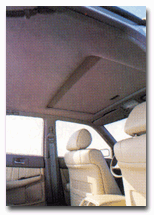
BBarnhardt Manufacturing Co., Charlotte, N.C.
Booth No. 1556.BASF Corp., Portsmouth, Va.
Booth No. 930.BBA Nonwovens, Old Hickory, Tenn.
Booth No. 966.Bematic di BettariniandSerafini, Larchmont, N.Y.
Booth No. 244.Best Cutting Die Co., Skokie, Ill.
Booth No. 134.Bettcher Industries Inc., Birmingham, Ohio.
Booth No. 2556.BFGoodrich Performance Materials, Cleveland.
Booth No. 864.BF Perkins, Rochester, N.Y.
Booth No. 546.BHT Bicma Hygienetechnologie GmbH, Germany.
Booth No. 350.Biax Fiberfilm Corp., Greenville, Wis.
Booth No. 1056.Bikoma AG Spezialmaschinen, Germany.
Booth No. 2466.Binder GmbHandCo., Germany.
Booth No. 2551.Bondex Inc., Trenton, S.C.
Booth No. 2552.Boschert LLC, Mobile, Ala.
Booth No. 246.Bostik Findley Inc. Industrial Adhesives Division, Middleton, Mass.
Booth No. 1020.Bowers Fibers Inc., Charlotte, N.C.
Booth No. 937.Boyd Converting Co., South Lee, Mass.
Booth No. 659.bp Amoco Fabrics, Germany.
Booth No. 920.Branson Ultrasonics Corp., Danbury, Conn.
Booth No. 759.Buckeye Technologies Inc., Memphis, Tenn.
Booth No. 1156. CCalemard, France.
Booth No. 1754.Caligen Foam Ltd., United Kingdom.
Booth No. 1153.Cavitec AG, Switzerland.
Booth No. 616.Ceccato S.p.A., Italy.
Booth No. 1114.Cellulose Converting Equipment S.r.l., Italy.
Booth No. 1102.Cerex Advanced Fabrics, Cantonment, Fla.
Booth No. 1157.Champion Roller, Rock Hill, S.C.
Booth No. 617.Chase MachineandEngineering Inc., West Warwick, R.I.
Booth No. 759.China Nonwovens Technical Association (CNTA), China.
Booth No. 251.CNTA ScienceandTechnology Co. Ltd., China.
Booth No. 251.Christoph Burckhardt AG, Switzerland.
Booth No. 2170.Clopay Plastic Products Co., Cincinnati.
Booth No. 1044.Cofpa, France.
Booth No. 2170.Cognex Corp., Alameda, Calif.
Booth No. 1218.Comerio Ercole S.p.A., Italy.
Booth No. 2659.Concert Industries, Canada.
Booth No. 2250.Consolidated Textiles Inc., Charlotte, N.C.
Booth No. 583.Conwed Plastics, Minneapolis.
Booth No. 742.Cotton Incorporated, Cary, N.C.
Booth No. 1456.CPE Inc., Spartanburg, S.C.
Booth No. 1320.CraneandCo. Inc., Dalton, Mass.
Booth No. 752.CTC International Inc., West Caldwell, N.J.
Booth No. 1140.DDan-Webforming International AS, Denmark.
Booth No. 1329.Dawson Textile Machinery, Greensboro, N.C.
Booth No. 1151.DCP-Lohja Inc., Willowbrook, Ill.
Booth No. 2152.Deccofelt Corp., Glendora, Calif.
Booth No. 253.Decoup, France.
Booth No. 1754.DellOrcoandVillani, Larchmont, N.Y.
Booth No. 244.Diatec S.r.l., Italy.
Booth No. 424.Dienes Corp., Spencer, Mass.
Booth No. 2560.Dilo Systems Group, Charlotte, N.C.
Booth No. 2157.Diversified Systems Inc., Greenville, S.C.
Booth No. 259.Double E Co., West Bridgewater, Mass.
Booth No. 329.Dounor, France.
Booth No. 2446.Dover Flexo Electronics, Rochester, N.H.
Booth No. 1442.Dow Plastics, a business group of The Dow Chemical Co., Midland, Mich.
Booth No. 960.Dukane Ultrasonics, St. Charles, Ill.
Booth No. 2566.Dunsirn Industries, Neenah, Wis.
Booth No. 559.DuPont, Wilmington, Del.
Booth No. 914. Dynisco, Franklin, Mass.
Booth No. 257.EEastman Chemical Co., Kingsport, Tenn.
Booth No. 668.Edelmann Maschinen GmbH, Germany.
Booth No. 2170.Eduard Kusters Maschinenfabrik (Zima Corp.), Germany.
Booth No. 2452.Elsner Engineering Works Inc., Hanover, Pa.
Booth No. 2464.EMS Griltech, Sumter, S.C.
Booth No. 2054.Eniplan Personal Products Machine Co., Brazil.
Booth No. 345.Enka Tecnica GmbH, Germany.
Booth No. 2170.ErhardtandLeimer Inc., Duncan, S.C.
Booth No. 429.ES FiberVisions, Denmark.
Booth No. 466.European Disposables and Nonwovens Association (EDANA), Belgium.
Booth No. 338.Eurotherm Gauging Systems, Billerica, Mass.
Booth No. 2669.FFairview Machine, Chicopee, Mass.
Booth No. 2453.Fa-Ma Jersey, Italy.
Booth No. 1202.Fameccanica Data S.p.A., Italy.
Booth No. 1244.Far Eastern Textile Ltd., China.
Booth No. 1750.Fare S.p.A., Italy.
Booth No. 2358.Fehrer AG, Austria.
Booth No. 1466.FiberBuys.com, Colonial Heights, Va.
Booth No. 803.Fibermatics Inc., Philadelphia.
Booth No. 907.FiberVisions Inc., Covington, Ga.
Booth No. 466.First Quality Nonwovens Inc., Great Neck, N.Y.
Booth No. 2166.Fi-Tech Inc., Richmond, Va.
Booth No. 2170.Fitesa S.A., Brazil.
Booth No. 1023.Fleissner Inc., Charlotte, N.C.
Booth No. 2369.Flessopak S.r.l., Italy.
Booth No. 704.F.N. SheppardandCo., Erlanger, Ky.
Booth No. 237.F.O.R. Ing. Graziano S.p.A., Italy.
Booth No. 2659.Foamex International Technical Products, Eddystone, Pa.
Booth No. 1166.Foster Needle, Manitowoc, Wis.
Booth No. 2366.Freudenberg Nonwovens Group, Durham, N.C.
Booth No. 908.Fulflex Inc., Middletown, R.I.
Booth No. 1954.GGDM S.p.A., Italy.
Booth No. 1746.Gelok International Corp., Amsterdam, N.Y.
Booth No. 265.Gem Urethane Corp., Amsterdam, N.Y.
Booth No. 265.General Foam Corp., Paramus, N.J.
Booth No. 765.Georgia-Pacific Corp., Brunswick, Ga.
Booth No. 1160.Georgia-Pacific Nonwovens Group, Green Bay, Wis.
Booth No. 2060.Gevas PackagingandConverting Technolgies Ltd., Boynton Beach, Fla.
Booth No. 630.GFM Maschinenbau GmbH, Germany.
Booth No. 542.Globe Manufacturing Corp., Fall River, Mass.
Booth No. 534.Gordian Industries Ltd./Equal Good Textile Chemical Fibre Products, Hong
Kong.
Booth No. 634.Green Bay Nonwovens, Green Bay, Wis.
Booth No. 164.Groz-Bechert USA Inc., Charlotte, N.C.
Booth No. 2246.GSE Nonwovens, Kingstree, S.C.
Booth No. 1104.Guandong Nonwovens Association, China.
Booth No. 421.Guial, France.
Booth No. 819.
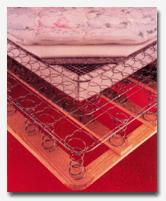
HH. Hergeth GmbH, Germany.
Booth No. 343.Hainan Xinlong Nonwovens Co. Ltd., China.
Booth No. 738.Hangzhou Xinhua Group Corp., China.
Booth No. 437.Healthy Machinery Co. Ltd., China.
Booth No. 442.Henkel Adhesives, Elgin, Ill.
Booth No. 946.Herrmann Ultrasonics Inc., Schaumburg, Ill.
Booth No. 2050.Hollinee Filtration, Sharonville, Ohio.
Booth No. 708.Hollingsworth Inc., Greenville, S.C.
Booth No. 868.HollingsworthandVose Co., East Walpole, Mass.
Booth No. 1054.Honeywell Inc., Duluth, Ga.
Booth No. 2652.HPT Plastics Inc./Ace Films, Fort Myers, Fla.
Booth No. 1152.IIbis International Inc., Hoschton, Ga.
Booth No. 2667.Idrosistem S.r.l., Italy.
Booth No. 2170.Ilapak Inc., Newtown, Pa.
Booth No. 238.Industrial Cleaning Systems/Lewis Cleaning Systems, Simpsonville, S.C.
Booth No. 709.Industrias Notesa S.A. de C.V., Mexico.
Booth No. 825.Inman Pack Sigma System Inc., Westland, Mich.
Booth No. 1301.Innovent, Peabody, Mass.
Booth No. 554.Intercontinental Polymers Inc., Lowland, Tenn.
Booth No. 260.International Fiber Journal, Charlotte, N.C.
Booth No. 252.Inventa-Fischer GmbHandCo. KG, Germany.
Booth No. 2550.IR Engraving (Div. of IR International), Sandston, Va.
Booth No. 658.Italiana Rigenerazione, Greensboro, N.C.
Booth No. 1151.ITP Sellars, Milwaukee.
Booth No. 952.ITS Publishing, Switzerland.
Booth No. 330.ITW Dynatec, Hendersonville, Tenn.
Booth No. 1566.JJacob Holm Industries S.A., France.
Booth No. 816.James H. Heal and Co. Ltd., England.
Booth No. 430.Jen-Coat Inc., Westfield, Mass.
Booth No. 2549.JM Laboratories, Dawsonville, Ga.
Booth No. 1154.Johns Manville Corp., Denver.
Booth No. 824.Jossi Systems AG, Switzerland.
Booth No. 824.KKamas Industri AB, Sweden.
Booth No. 1329.KAO Specialities Americas LLC (High Point Textile Auxiliaries), High Point,
N.C.
Booth No. 924.Karlville Development/ ChiChang, Miami.
Booth No. 1101.Kasen Nozzle MFG Co. Ltd., Japan,
Booth No. 451.Kleinewefers KTM, Greenville, S.C.
Booth No. 1650.Kobelco (Kobe Steel Ltd.), Japan.
Booth No. 716.KoSa, Charlotte, N.C.
Booth No. 1564.KT Industries Inc., Fort Wayne, Ind.
Booth No. 758.Kuraray America Inc., New York City.
Booth No. 536.Kyung Young M/C Ind. Co. Ltd., Korea.
Booth No. 230.LLaroche S.A., France.
Booth No. 255.Larson/Burton Inc., Loves Park, Ill.
Booth No. 642.LASOR/Systronics, Norcross, Ga.
Booth No. 268.Lawson-Hemphill Sales Inc., Spartanburg, S.C.
Booth No. 2650.Leigh Fibers Inc., Spartanburg, S.C.
Booth No. 558.Lenzing AG, Austria.
Booth No. 468.Lessco Inc., Dalton, Ga.
Booth No. 249.Libeltex NV, Belgium.
Booth No. 1155.LINPAC Materials Handling GmbH, Germany.
Booth No. 719.Lohjan Paperi Oy, Finland.
Booth No. 2152.LTG Inc., Spartanburg, S.C.
Booth No. 805.Lysac Technologies, Canada.
Booth No. 2554.MMahlo America Inc., Spartanburg, S.C.
Booth No. 726.Malcam Ltd., Israel.
Booth No. 1220.Marketing Technology Service Inc., Kalamazoo, Mich.
Booth No. 435.Martin Automatic Inc., Rockford, Ill.
Booth No. 1858.Martin Color-Fi Inc., Edgefield, S.C.
Booth No. 2450.McAlister International Inc., Charlotte, N.C.
Booth No. 623.McLaughlinandAssoc., Huntsville, Ala.
Booth No. 838.Messe Frankfurt Inc., Atlanta.
Booth No. 667.Mietex Corp., Walpole, Mass.
Booth No. 623. Miller Weldmaster Corp., Navarre, Ohio.
Booth No. 2445.Milliken Coated Products, White Stone, S.C.
Booth No. 909.Milyon S.A. de C.V., Mexico.
Booth No. 940.MiniFIBERS Inc., Johnson City, Tenn.
Booth No. 745.M and J Fibretech AS, Denmark.
Booth No. 1654.M and M Machinery Sales Inc., Denmark.
Booth No. 520.MOCON Inc., Minneapolis.
Booth No. 610.Mogul Spunbond-Meltblown Nonwovens and Composites, Turkey.
Booth No. 734.Monadnock Nonwovens LLC, Mount Pocono, Pa.
Booth No. 654.Munchy Ltd., England.
Booth No. 2654.NNaltex, Austin, Texas.
Booth No. 637.National Drying Machinery Co., Philadelphia.
Booth No. 649.National Jet Co., Lavale, Md.
Booth No. 664.National Nonwovens, Easthampton, Mass.
Booth No. 646.National Starch and Chemical, Bridgewater, N.J.
Booth No. 1972.National Wire Fabric, Star City, Ark.
Booth No. 2655.NCM Nonwoven Converting Machinery Co. Ltd., Taiwan.
Booth No. 360.NDC Infrared Engineering, Irwindale, Calif.
Booth No. 2364.Nelson Laboratories Inc., Salt Lake City, Utah.
Booth No. 665.Newco Enterprises Inc., Fairburn, Ga.
Booth No. 1107.Newco Fiber Co., Charlotte, N.C.
Booth No. 166.nonwovens.com/Nonwovens Markets, San Francisco.
Booth No. 444.Nonwovens Cooperative Research Center at North Carolina State University,
Raleigh, N.C.
Booth No. 251.Nonwovens/Industrial Textile Magazine, Switzerland.
Booth No. 330.Nonwovens Industry Magazine, Ramsey, N.J.
Booth No. 737.Nonwovens Report International, England.
Booth No. 2653.Nonwovens Technological Development Center of the Textile Industry, China.
Booth No. 1113.Nordson Corp./Nonwovens Systems Group, Norcross, Ga.
Booth No. 1966.Nordson Corp. Fiber Systems, Dawsonville, Ga.
Booth No. 1154.Novita S.A., Poland.
Booth No. 854.N.R. Spuntech IND Ltd., Israel.
Booth No. 530.NSC/Schlumberger Group Nonwoven Systems, France.
Booth No. 1214.NTI Global, Schenectady, N.Y.
Booth No. 550.
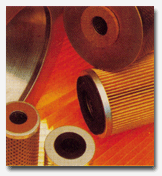
OOMMI, Greenboro, N.C.
Booth No. 1151.OMNOVA Solutions Inc., Chester, S.C.
Booth No. 2145.Optima Machinery Corp., Green Bay, Wis.
Booth No. 568.Orsa S.r.l., Italy.
Booth No. 557.Osprey Corp., Atlanta.
Booth No. 1960.PPantex Group, Italy.
Booth No. 1850.Paper Converting Machine Co., Green Bay, Wis.
Booth No. 1168.Para-Chem, Simpsonville, S.C.
Booth No. 2460.Parkinson Machinery and Manufacturing, Woonsocket, R.I.
Booth No. 1446.PGI Nonwovens/Polymer Group Inc., Mooresville, N.C.
Booth No. 1765.Plasma Coatings Inc., Waterbury, Conn.
Booth No. 653.Pliant Corp., Schaumburg, Ill.
Booth No. 1769.Polimeros y Derivados, Mexico.
Booth No. 548.Porous Materials Inc., Ithaca, N.Y.
Booth No. 2663.Powell Corp., Haverhill, Mass.
Booth No. 263.Pneumafil Corp., Charlotte, N.C.
Booth No. 663.Precision Custom Coatings LLC, Totowa, N.J.
Booth No. 809.Precision Fabrics Group Inc., Greensboro, N.C.
Booth No. 1158.QQuickdraft, Canton, Ohio.
Booth No. 1308.RRando Machine Corp., Macedon, N.Y.
Booth No. 2649.Rayonier, Jesup, Ga.
Booth No. 1124.Reifenhauser GmbH, Germany.
Booth No. 2170.Resolution Sciences Corp., Corte Madera, Calif.
Booth No. 444.Rhodia Performance Fibers, France.
Booth No. 457.Rieter Perfojet, Greensboro, N.C.
Booth No. 1546.RML Raynworth Marketing Ltd., Switzerland.
Booth No. 2657.Robatech USA Inc., Roswell, Ga.
Booth No. 168.Roehlen Engraving, Rochester, N.Y.
Booth No. 546.Rohm and Haas Co., Philadelphia.
Booth No. 1144.Rose Forgrove, St. Charles, Ill.
Booth No. 944.Rosenthal Manufacturing Co. Inc., Northbrook, Ill.
Booth No. 2553.Rubberflex/HPT Plastics, Fort Myers, Fla.
Booth No. 1152.SSaint-Gobain Technical Fabrics/Bayex, Niagara Falls, N.Y.
Booth No. 641.SAMPE, Covina, Calif.
Booth 326.Sandvik Hard Materials, France.
Booth No. 334.Santex AG, Switzerland.
Booth No. 616.Savare I.C. Specialty Adhesives, Italy.
Booth No. 368.Schober USA Inc., Cincinnati.
Booth No. 834.Sellars WipersandAbsorbents, Milwaukee.
Booth 952.Shalag Shamir Nonwoven Fabric Industry, Israel.
Booth No. 530.SI Corp., Chattanooga, Tenn.
Booth No. 1460.Sierem S.A., France.
Booth No. 829.Singer Spezialnadelfabrik GmbHandCo. KG, Germany.
Booth No. 1646.Secondary Materials and Recycled Textiles Association (SMART), Bethesda,
Md.
Booth No. 2651.Soltex International Inc. (a Radici Group Co.), Greenville, S.C.
Booth No. 242.Sommers Inc./Fiber Dynamics, High Point, N.C.
Booth No. 1654.Sonobond Ultrasonics, West Chester, Pa.
Booth No. 638.Sopal, Orangevale, Calif.
Booth No. 844.Speizman Yarn Equipment Inc., Charlotte, N.C.
Booth No. 619.Spooner Industries, Green Bay, Wis.
Booth No. 2453.Spraymation Inc., Fort Lauderdale, Fla.,
Booth No. 841.Spunfab Ltd., Cuyahoga Falls, Ohio.
Booth No. 560.SSPandTechnology S.r.l., Italy.
Booth No. 1240.Standridge Color Corp., Social Circle, Ga.
Booth No. 2660.Stein Fibers Ltd., Albany, N.Y.
Booth No. 633.Stockhausen Inc., Greensboro, N.C.
Booth No. 1452.Straubel Paper Co., Green Bay, Wis.
Booth No. 354.Struto LLC/Shoou Shyng Machinery, Dalton, Ga.
Booth No. 754.Sumitomo Seika Chemicals Co. Ltd., Japan.
Booth 842.Superior Fabrics Inc., Pompano Beach, Fla.
Booth No. 1024.T3M, St. Paul, Minn.
Booth No. 1159.Technical Association of the Pulp and Paper Industry (TAPPI), Atlanta.
Booth No. 435.Temafa GmbH, Germany.
Booth No. 2454.Tencel Inc., Axis, Ala.
Booth No. 266.Tenotex S.p.A., Italy.
Booth No. 1860.Testing Machines Inc., Islandia, N.Y.
Booth No. 1123.Texel Inc., Canada.
Booth No. XXX. Tex Tech Industries, North Manmouth, Maine.
Booth No. 2769.Textest Instruments, Switzerland.
Booth No. 430.Textiles Panamericanos, Greenville, S.C.
Booth No. 265.textileweb.com A Division of VerticalNet, Greensboro, N.C.
Booth No. 134.Textile World, Atlanta.
Booth No. 808.Thibeau Nonwoven Systems, France.
Booth No. 1216.Thwing-Albert Instrument Co., Philadelphia.
Booth No. 2670.Ticona, Summit, N.J.
Booth No. 2245.Tier-Rack Corp., Ballwin, Mo.
Booth No. 566.Trans-Pac Deutachland GmbH, Germany.
Booth No. 719.Tokuden Inc., Norcross, Ga.
Booth No. 958.Tredegar Film Products, Richmond, Va.
Booth No. 804.Tuntex Public Co. Ltd., Thailand.
Booth No. 224.Twitchell Corp., Dothan, Ala.
Booth No. 460.UUngricht Roller and Engraving Technology, Germany.
Booth No. 2146.Unimin India Ltd., India.
Booth No. 2767.Union S.p.A., Italy.
Booth No. 1136.Universal Inc. Co. Ltd., England.
Booth No. 245.University of Tennessee TextileandNonwoven Development Center, Knoxville,
Tenn.
Booth No. 807.U.S. Pacific Nonwovens Industry Ltd., China.
Booth No. 1036.VValmet Inc., Biddeford, Maine.
Booth No. 1468.Velcro USA Inc., Manchester, N.H.
Booth No. 1950.Versacore Industrial Corp./Wickel Technik GmbH, Germany.
Booth 1208.Vliesstoffwerk Christian Heinrich Sandler GmbH and Co. KG, Germany.
Booth No. 2666.WWacker Polymer Systems LP, Adrian, Mich.
Booth No. 1854. Web Converting Inc., Westborough, Mass.
Booth No. 524.Wellman Inc., Charlotte, N.C.
Booth No. 1050.Western Nonwovens Inc., Carson, Calif.
Booth No. 1157.William Barnet and Son Inc., Arcadia, S.C.
Booth No. 450.Wintriss Engineering, San Diego.
Booth No. 1316.Wise Industries Inc., Kings Mountain, N.C.
Booth No. 2354.Wm. T. BurnettandCo., Jessup, Md.
Booth No. 434.Woodbridge Foam, Chattanooga, Tenn.
Booth No. 1745.ZZima Corp., Spartanburg, S.C.
Booth No. 2452.Zuiko Corp., Japan.
Booth No. 454. Finalists Announced For IDEA01 Achievement AwardsEighteen global
nonwovens suppliers and producers were named as finalists in the inaugural IDEA01 Achievement
Awards. The competition, co-sponsored by the Association of the Nonwovens Fabrics Industry (INDA)
and Nonwovens Industry, recognizes outstanding innovations that have helped advance the nonwovens
industry since the last IDEA show in 1998.The IDEA Achievement Awards will recognize some of the
most important developments that occurred in our business during the past three years, said Ted
Wirtz, president, INDA. Every company that was nominated contributed significantly to the
outstanding growth of the nonwovens industry.The diversity of the nominations for these awards is
an indication of just how strong the nonwovens industry has become, added Rod Zilenziger Jr.,
publisher, Nonwovens Industry. We received nominations from all corners of the world, and choosing
three category finalists among them was an extremely difficult task.Criteria for the awards
include: market acceptance, commercial viability, technical advance and/or new use. Nominated
products must have been introduced to the market either through a technical paper or as a
commercial product. The finalists for the IDEA01 Achievement Awards are:
IDEA01 Fibers and Raw Materials Achievement Award Eastman Chemical Co., Kingsport, Tenn.:
Eastar Bio Copolyester Fiber Innovation Technology, Johnson City, Tenn.: Bicomponent and Specialty
Polymer Staple Fibers 3M, St. Paul, Minn.: Nextel Flame Stopping Dot Paper
IDEA01 Equipment Achievement Award Dilo Systems Group, Charlotte, N.C.: Hyperpunch
Needlelooms KT Industries Inc., Fort Wayne, Ind.: Stac-Pac Rieter-Perfojet, Greensboro, N.C.:
AirLace 2000
IDEA01 Rollgoods Achievement Award Freudenberg Nonwovens Group, Durham, N.C.: Evolon
Kimberly-Clark, Neenah, Wis.: Intrepid Filter Material PTI Inc., Christiansburg, Va.: K-Flex
Ballistic Protection Material
IDEA01 Short-Life End Product Achievement Award Clopay Plastic Products Co., Cincinnati:
Breathable Laminates Kimberly-Clark, Neenah, Wis.: Huggies Little Swimmers ProctorandGamble,
Cincinnati: Swiffer
IDEA01 Long-Life End Product Achievement Award All Felt/Hollinee, Ingleside, Ill.:
Electrostat Colbond, Enka, N.C.: Electrostat Western Nonwovens Inc., Carson, Calif.: PolarGuard
IDEA01 Entrepreneur Achievement Award Jentex, Taiwan Mogul Spunbond-Meltblown Nonwovens
and Composites, Turkey VersaCore, The NetherlandsFor additional information on IDEA01, visit the
IDEA website at
www.inda.org/events/idea01.
March 2001





